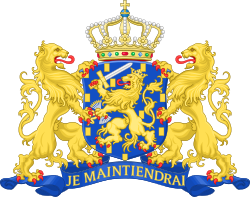This article relies largely or entirely on a single source .(September 2018) |
First De Geer cabinet | |
|---|---|
| Cabinet of the Netherlands | |
 Meeting of the First De Geer cabinet on 12 March 1926 | |
| Date formed | 8 March 1926 |
| Date dissolved | 10 August 1929 (Demissionary from 3 July 1929) |
| People and organisations | |
| Head of state | Queen Wilhelmina |
| Head of government | Dirk Jan de Geer |
| No. of ministers | 9 |
| Ministers removed | 2 |
| Total no. of members | 11 |
| Member party | Roman Catholic State Party Anti-Revolutionary Party Christian Historical Union |
| Status in legislature | Centre-right majority government |
| History | |
| Legislature terms | 1925–1929 |
| Predecessor | First Colijn cabinet |
| Successor | Third Ruijs de Beerenbrouck cabinet |
| Part of the Politics series |
 |
|---|
| |
The First De Geer cabinet was the cabinet of the Netherlands from 8 March 1926 until 10 August 1929. The cabinet was formed by the political parties Roman Catholic State Party (RKSP), Anti-Revolutionary Party (ARP) and the Christian Historical Union (CHU) following the fall of the First Colijn cabinet on 11 November 1925. [1]










